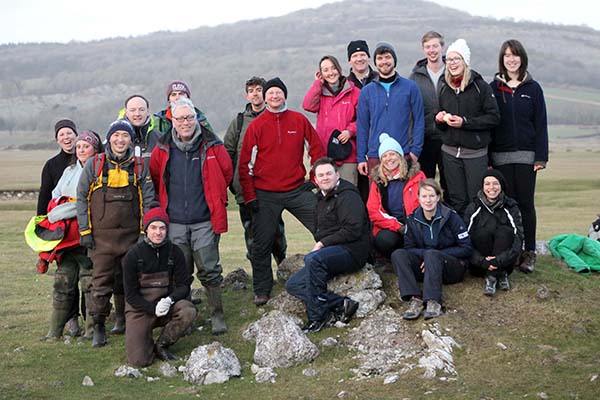Last week, post graduate students from across the UK spent a week in Morecambe Bay getting to grips with biodiversity and ecosystem assessment in the coastal margin. The Advanced Training Short Course was funded by NERC and delivered by CBESS and MASTS.
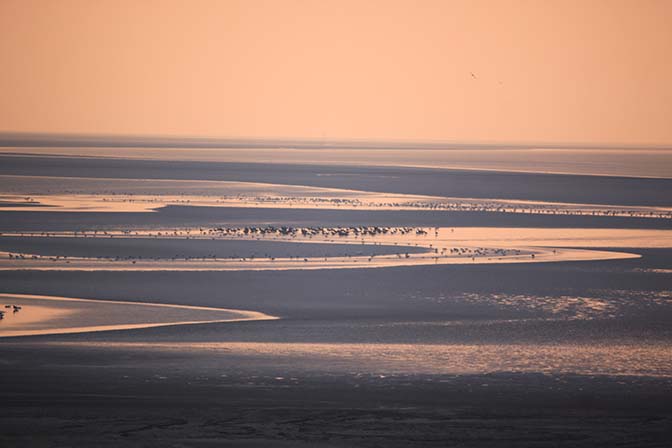
The week long course could not have been so successful if it had not been for the expertise and enthusiasm of mudflat and salt marsh researchers from across the UK. The course was based at Arnside Independent Youth Hostel and Study Centre who were excellent hosts, accommodating over 20 students and academics, their various bits of kit and VERY muddy waders.
To kick things off the students were presented with the task of identifying what they thought the essential elements of a successful field campaign were. These ideas were built on and discussed throughout the course, with sessions on experimental design, data collection and analysis, and the logistic considerations of collecting data in dynamic environments like salt marshes and mudflats.
Warton Sands, one of the CBESS experimental sites, was to play host to a day in the field, where the students applied their knowledge of experimental design and data collection. They were first introduced to the salt marsh sampling below and above ground using; cores (sediment stability, root biomass and granulometry), an inverted leaf blower ( invertebrate diversity) and quadrats (vegetation structure/biomass and taxonomy).

This was followed by a session on sediment accretion (the rate at which sediment builds up on the saltmarsh).
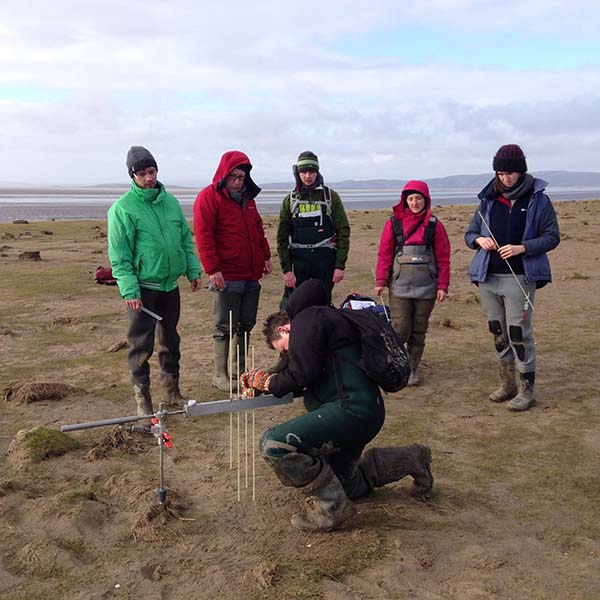
To finish things off, the students moved to the mudflats and learnt how to use; a cohesion strength meter and shear vane (sediment stability), cryo-techniques (chlorophyll and carbon), gas flux (carbon dioxide sequestration), cores (macrofauna diversity) and spectroradiometer (primary production).
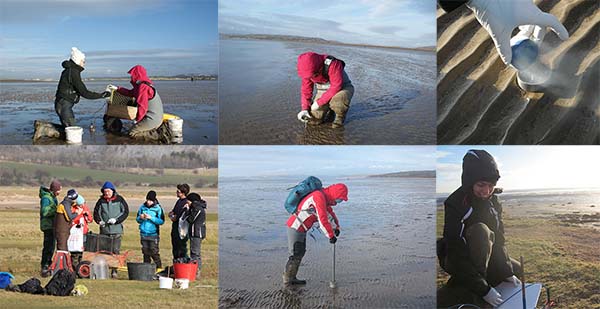
All this was rounded off with sample processing back at the youth hostel, a very busy day. The students were shown how to download, analyse and interpret data collected in the field.
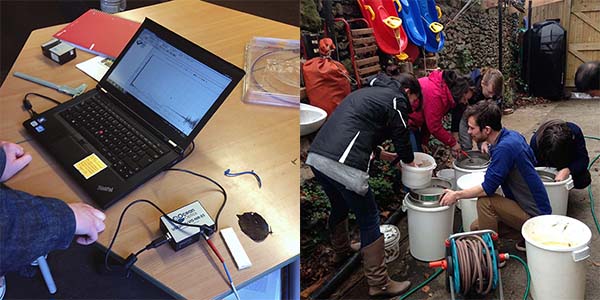
Students were then provided with the opportunity to try their hands at picking through the macrofauna samples and schooled in the art of species identification. The students were introduced to Biological Traits Analysis.This technique uses a series of life history, morphological and behavioural characteristics of a species to indicate aspects of their ecological functioning which provides a measure of functional diversity.
Drones or unmanned ariel vehicles (UAVs)are becoming increasing popular as a tool to sample intertidal habitats. The students were provided with an overview of how UAVs can be used to collect useful data, the types of aircraft available, and uncommon to intertidal sampling, the legal implications of using a UAV. This was nicely rounded off with a session on up-scaling, now you’ve got all this fantastic data, how do you up-scale environmental data from specific areas to the landscape scale?
After a very intense three and half days that not only included the above, but also lectures on economic valuation of flood defences, east coast storm surges and coastal management techniques, the students headed to Leighton Moss RSPB Nature Reserve. Staff at Leighton Moss gave the students an insight into how the reserve was managed for wildlife.

The course culminated in a student led session, where they were presented with scenarios, for example, an off-shore tidal turbine and the creation of a nature reserve. The students were asked to present their ideas on how they would design, organise and execute an interdisciplinary, multi stakeholder field campaign.
This is the second year that we have run this course in Morecambe Bay and it was a brilliant success, feedback from the participants was very positive:
- If anything is exceed my expectations, the practical elements were well taught, e.g. microscopes, liquid nitrogen techniques and the presentations were very informative.
- Introduced to ecological fieldwork, and I’m more confident now in this area. Realising that the world of ecology is accessible for me.
- Enjoyed learning from others on the course and facilitators did well to play off the knowledge in the room and incorporate this into topics.
- Well organised, well run and appropriate speakers for the topics covered. The most useful and stimulating course I have been on through NERC.
